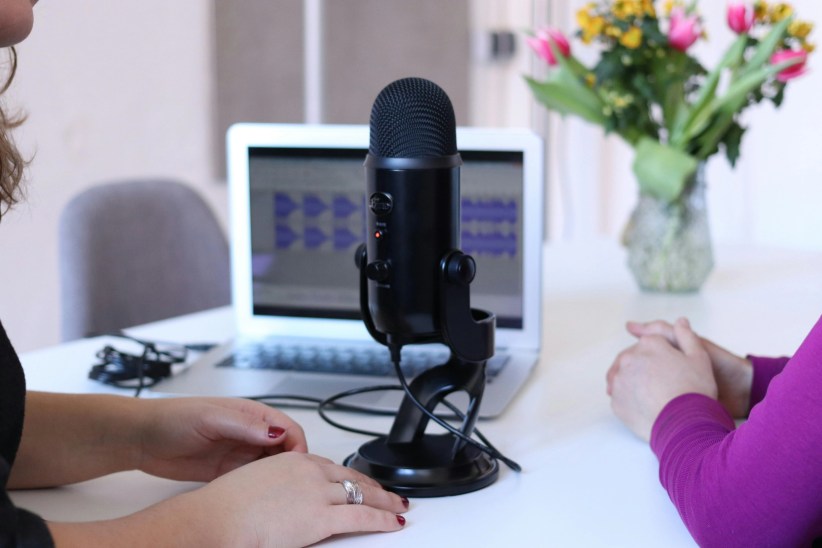
Editor’s Note: I’ve had the luck of getting to know Angelique LeDoux in several capacities: first, as the creator of Jade’s ToyBox, a toy-seller with an eye for fun products that are also educational and eco-positive; and later as the co-creator of a great education group call Parents Of Accelerated Learners. A former journalist, she’s been relentless in trying to understand PANDAS, and has been an incredible source of information and support to many families. Proud to know her. Spread the word.
-Eric Messinger
As parents, we stop at nothing to cure our children’s illnesses. We conduct endless hours of Internet research, seek multiple doctors’ opinions, launch blood drives and online petition signings, rally friends to join our walkathons, read bestsellers about the disease, and even crowd-source fundraising for treatments of rare diseases not fully understood by the mainstream medical community.
Pediatric Autoimmune Neuropsychiatric Disorders Associated with Streptococcal infection (PANDAS), is one of those illnesses that few parents—and pediatricians—have on their radar. Characterized by a dramatic onset of symptoms, PANDAS includes motor or vocal tics, and/or OCD-like obsessions or compulsions often exhibited between age 3 and puberty. A slew of other symptoms and atypical behaviors may also be present, including an ADHD-like loss of focus, hyperactivity, irritability, severe separation anxiety, mood changes, sleep disturbances, bed wetting, sensory sensitivities, fine gross motor changes (including handwriting regression), a deterioration in learning and math abilities, and even anorexia. Movement abnormalities aren’t unusual either. Given the rollercoaster of fluctuating symptoms characteristic of PANDAS, it’s a hard illness for parents to miss because its associated behavior is totally out of character for their child.
Parents—myself included—can often tell you the exact day the symptoms began; the day their child changed. For us, it was August 8, 2013. It began with repeated eye blinking, then neck jerking, jumping, sniffing, mouth sounds—the motor and vocal tics. Then came the clinginess and separation anxiety, such as crying when I left the house. Over the next few months, the intensity of her symptoms waxed and waned, but the list of indicators that something was not right would continue to grow. She developed a marked inability to stay focused at home and worse, at school. Her anxiety hit an all-time high over new things like an approaching storm, fear over a babysitter putting her to bed, or even going to sleep. The anger, frustration and moodiness were just not her.
Experts believe that PANDAS, which may affect as many as one in every 200 children according to recent estimates, results when antibodies created to fight off an infection (such as strep, Lyme, etc.) become misdirected and attack the basal ganglia, a part of the brain associated with a variety of functions that include motor control, routine behaviors, eye movements, and cognitive and emotional functions. This autoimmune reaction is believed to result in the sudden onset of neuropsychiatric symptoms—tics, OCD, chorea, anxiety, and more.
The basal ganglia is known to play a role in numerous neurological conditions, for example movement and behavioral disorders like ADHD, Tourette’s Syndrome (TS), OCD, anxiety, Parkinson’s, chorea and others. The idea that an infection could cause mental and behavioral disorders isn’t new. Almost 100 years ago, the rapid onset of hallucinations and memory problems were known to be caused by a bacterial infection of the brain resulting from syphilis. Neurosyphilis, as it was called, was nearly wiped out some 30 years later as a result of antibiotics. Similarly, gastric ulcers—long thought to have a psychological underpinning with stress and a Type A personality as the cause– are now understood to have a bacterial basis that could be cured with antibiotics too. Few within the mental health community were aware of the connection until 25 years later in 2005, when the researchers were awarded a Nobel Prize for the discovery.
The medical community also accepts that untreated strep causes the movement disorder Sydenham’s chorea, (a sign of Rheumatic fever), so it wasn’t a huge leap that PANDAS– which sometimes presents with chorea– could be associated with a bacterial infection too.
Other autoimmune illnesses such as anti-NMDA receptor encephalitis, the focus of Susannah Cahalan‘s book, Brain on Fire, support the case for the biological invader-mental health connection as well. In the book, Cahalan, a healthy, young New York Post reporter, documents her downward spiral that eventually includes schizophrenic-like psychotic episodes. After numerous misdiagnoses, a neurologist at NYU Medical Center does a brain biopsy and diagnoses Cahalan with the rare disorder that was causing brain inflammation, saving her from life in the mental ward. She later makes a full recovery after numerous intravenous immune globulin (IVIG) procedures (a pooled blood product from healthy donors) that help boost immune response and reduce inflammation of the brain. High levels of steroids– which also decrease inflammation– and later plasmapheresis, which flushes out the harmful antibodies, were essential to her recovery. Incidentally, these are the same treatments parents are pursuing for children with PANDAS who do not respond well to antibiotics.
Another book, Saving Sammy: A Mother’s Fight to Cure Her Son’s OCD, explores attorney Beth Maloney’s experience with her then 12-year-old son, who was diagnosed with OCD and then Tourette’s before the PANDAS diagnosis. Now fully recovered, Sammy became the poster child for PANDAS and lent more support for strep infection as a trigger and antibiotics as part of the cure. Maloney remains an active advocate not only for the illness, but for other parents on the same journey to help their own children find proper diagnosis and treatment.
Ironically, it was a child psychologist who led us to a pediatric neurologist, not our daughter’s pediatrician, who maintained the stance—not uncommon for doctors not versed in the research—that PANDAS is a “controversial diagnosis” and recommended we simply treat our daughter for a tic disorder. The neurologist discovered that her strep antibodies were more than five times normal levels, suggesting the possibility that a biological invader—strep—could be causing the neuropsychiatric symptoms.
Though the medical community has known about PANDAS since the late ’90s and generally agrees on its symptoms, the contention stems from what causes them. Initially, experts at the National Institute of Mental Health (NIMH) focused on strep as the core cause, but researchers have more recently concluded that it’s not the only trigger. Influenza and varicella infections (such as chicken pox), are also potential culprits.
More than 10 years after Susan E. Swedo, MD, chief of the pediatrics and developmental neuroscience branch at NIMH, defined the original PANDAS disorder, another broader category emerged called PANS. Pediatric Acute-Onset Neuropsychiatric Syndrome refers to the same symptoms- minus the tics, but Swedo’s group expanded the infectious triggers: strep, lyme, mycoplasma, the flu virus, as well as others. Another version, CANS, or Childhood Acute Neuropsychiatric Symptoms, was coined by the other group to downplay the role of strep or other infections given what they perceive to be inconclusive causation.
So it’s no wonder pediatricians haven’t connected the dots. While the research continues, parent desperation to help their child often trumps clinical trials and years of research– even if what ‘works’ is anecdotal or experimental.
Proper early diagnosis and personalized treatment appear to be the key with PANDAS, but while the science plays catch-up, many parents are left to fend for themselves to find specialists and treatments that work. Currently, a clinical evaluation of symptoms is standard practice, and screening scales can help assess symptoms like OCD and tics, and track their progression. Among them are: the Children’s Yale Brown Obsessive Compulsive Scale (CY BOCS) for assessing OCD behaviors; The Yale Global Tic Severity Scale (YGTSS) for tics; and the Pediatric Acute Neuropsychiatric Symptom Scale for assessing all PANS symptoms (excluding tics).
“Pediatricians should do a simple screening if there are abrupt onset symptoms,” says Dr. Eric Hollander, clinical professor of psychiatry and behavioral sciences at the Albert Einstein College of Medicine and director of the Autism and Obsessive Compulsive Spectrum Program at Montefiore Medical Center and Albert Einstein. “If PANDAS isn’t on their radar, and they aren’t screening, the lack of treatment could lead to more clinical, academic and social consequences.”
“The recommended course of treatment really depends on the child, and how long they have had [PANDAS],” says pediatric neurologist Rosario Trifiletti, MD, who specializes in PANDAS cases. For many, treatment can be a long process, since the disorder is often difficult to diagnose.
“Pediatricians don’t want to be handing out antibiotics to kids and end up with resistant bacteria…yet it’s clear that at least a subgroup of kids responds to an antibiotic if treated early,” Hollander says.
For those who don’t improve on antibiotics, other options have been pursued including tonsillectomy, steroids, infusions of IVIG (a pooled blood product from healthy donors) that helps boost immune response and reduce brain inflammation; plasmapheresis or plasma exchange; and cognitive behavioral therapy. These treatments and others have shown success anecdotally and in studies, but the research continues.
Creating a Parent Action Plan will help guide your child’s treatment and keep you sane. [Editor’s note: see sidebar for more details on the action plan.] Additionally, choose your doctors wisely—don’t be afraid to ask if your doctor has experience with successfully treating PANDAS. Our daughter’s “A Team” consisted of a new pediatrician who had experience with PANDAS, a pediatric neurologist, and an ENT and integrative medicine specialist, whose personalized approach aimed to improve her body’s deficiencies through vitamin supplements and other means.
When your child seems to change overnight, it certainly shifts your outlook on mental health. Our society has a stigma associated with mental illness, so what are the implications if mental illness—psychotic and behavioral issues—could be associated with something as common as an infection? I’m hopeful that we won’t have to wait until a medical novel about the disorder is a best-seller, or until it reaches Autism rates before PANDAS receives mainstream medical acceptance. But until PANDAS and other similarly misunderstood diseases get the attention, research, funds, and cures they deserve, I hope you’ll look differently at the next petition or fundraiser that comes across your desk and support it.
Angelique LeDoux is an NYC mom and the founder of Jade’s ToyBox (jadestoybox.com) and Parents of Accelerated Learners, NYC (palworkshopsnyc.org).






















